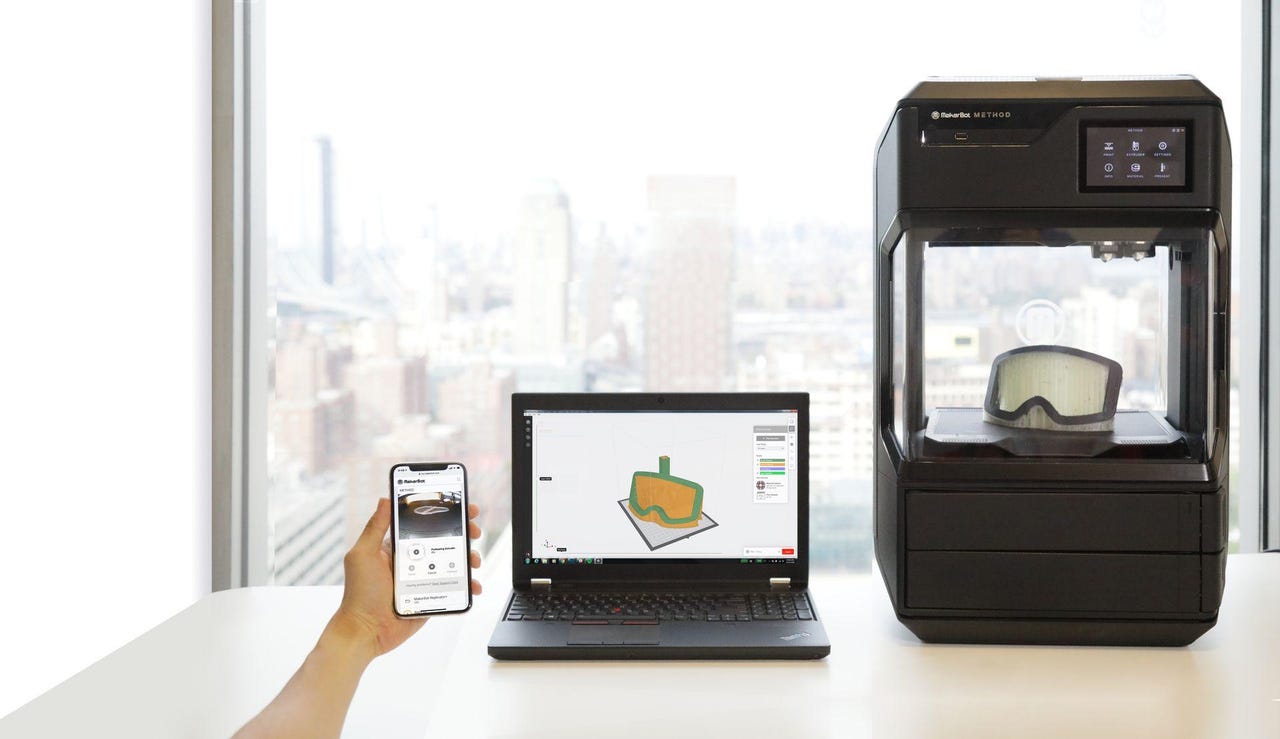First look: MakerBot takes 3D printing to the cloud with CloudPrint


One of the things I've always liked about MakerBot is it keeps improving its software. Sure, when it releases new software, it's sometimes not quite ready for prime time. But give it time and that once not-fully-baked software grows into a powerhouse.
ZDNET Recommends
When I first started working with MakerBot Print in 2016, it was essentially unusable. I could not successfully produce prints from it. But, after a year, it got substantially better. After another year, it could be considered unreservedly "quite good."
Then came MakerBot Cloud, which introduced the ability to manage prints from the cloud. And now, MakerBot has announced another substantial jump, renaming the product to MakerBot CloudPrint and adding cloud-based collaboration features for designers and engineers.
Must read:
- DIY-IT Project: 3D printing discovery series
- Is MakerBot's new Method 3D printer ready enough to save the company?
- Hands on with resin 3D printers: We put the Elegoo Mars, Mars Pro, and Zortrax Inspire to the test
This is an interesting piece of software for a pandemic-driven world of remote working, yet the problem it solves isn't exactly intuitive. Remote 3D printing?
We can easily understand how cloud-based email works just fine for remote workers. But cloud-based 3D printing? You never need to physically touch your email inbox. A 3D printer is different. It's hands-on. At some point, someone is going to have to remove the print from the printer by hand.
Think about a couple of scenarios. Engineers can work from home, but factory workers have to be on the factory floor. An engineer can design a jig or component, test it on a home printer, make any necessary design alterations, and then queue it for printing at the factory. There, a worker can pick the newly printed object up and put it right to work.
Here's another scenario where multiple engineers or designers are collaborating: While it's possible to email 3D printer object files around, imagine instead simply queuing an object to print on a colleague's machine. I can definitely imagine, "Hey, Dave. I sent it to your printer. After lunch, could you look at it and let me know why the left-handed wind shifter seems to be interfering with the skyhook?"
Must read:
- Welcome to the Fab Lab
- Is the Ultimaker S5 the ultimate Ultimaker 3D printer?
- 3D printing hands-on: LulzBot Mini 2 first look
How about low-volume manufacturing using 3D printers? Let's say you have to make a hundred prints, with each print taking eight hours. If you have a print farm of 10 machines, it'd be great to queue all those prints to the printers. But one of the prints is bound to fail. Good queue management and printer status information -- especially remotely -- can be very helpful to keep the line running.
The point is, with multiple printers and remote printing, it's possible to collaborate on physical objects without individual designers needing to be in each others' physical presence. And it's possible to manage low-volume printing without constantly needing to be in the printer room.
The new MakerBot CloudPrint has a number of useful features to facilitate these and other similar scenarios.
The software
So, let's take a minute to look at the software and service offering itself. Slicing and print preparation is now available from within the browser.
As you can see, there is now a full range of settings, tweaks, and options. These were missing in the original MakerBot Print. It's come a long way since then.
What's cool is that you can now actually look at the printers from within your interface. If you call up the printer management interface, you can see what's on the print bed while it's printing in real-time.
You can see a detailed print queue and history for each printer.
There's a lot to like in these improvements. If you're working remotely and doing 3D printing, let us know what you're doing to collaborate and stay in sync with your teammates in the comments below.
You can follow my day-to-day project updates on social media. Be sure to follow me on Twitter at @DavidGewirtz, on Facebook at Facebook.com/DavidGewirtz, on Instagram at Instagram.com/DavidGewirtz, and on YouTube at YouTube.com/DavidGewirtzTV.